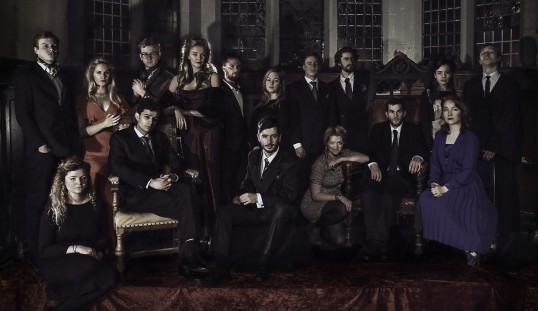Merchants of Little Venice
Pre-WW2 setting for EUSC Merchant of Venice
Shakespeare’s Merchant of Venice is to get a new production this week which uses the play’s problematic issues of anti-semitism to explore intolerance and racism in 1930s Britain.
Opening in the Assembly Roxy on Tuesday for a five night run, the Edinburgh University Shakespeare Company production will be set in the canal-side grandeur of London’s Little Venice in the summer of 1939.
Now in its sixth year, the EUTC give Shakespeare’s Venetian merchants a more 20th century face. While Britain is travelling headlong towards one of the most devastating and transformative periods of its history, the carefree London elite are oblivious to the oncoming storm as they sit around smoking their cigars and enjoying the fruits of their inheritance.
Antonio is the owner of a successful jewellery business left to him by his father. His pal is the handsome, charismatic Bassanio, who has set his sights on the glamorous heiress Portia and will stop at nothing to win her over.
But hardly thirty minutes from swish Little Venice are the brick terraces of the East End, where Shylock, a Jew, has earned a small fortune bankrolling the exploits of the rich and irresponsible. Although he would like nothing more than to see them fall from grace – the better by his own hand.
Director Rae Glasman, found her inspiration to stage the play in this era during last year’s anniversaries for both World Wars – the centenary of the start of the First World War and the 70th anniversary of the 1944 D-day Landings.
unsettling departure
Glasman told Æ: “The subsequent media focus and conversations with family members about life prior to and during WWII led me to start thinking about what was happening in the UK while tensions were building in Europe.
“Britain was a sanctuary from much of Europe during this period, but paradoxically the increase in immigration, particularly Jewish, prompted a rise in racism and intolerance during the late 1930s. These grey areas in Britain’s conduct towards those it was sheltering are hardly ever considered or discussed in the media or otherwise.
“It’s this unsettling departure from the comfort of seeing history in black and white that I would want audiences to take away from this adaptation.”
Glasman points to the play as one which, by its own nature, dismantles people’s tendency to simplify complicated situations by framing them as a war of good against evil. Shylock’s story, in particular, can’t be reduced to such simple terms and, she says, prompts a “fascinating blend of hatred and sympathy in audiences”. Setting it in the 1930s adds yet another dimension.
The Merchant of Venice was written at the end of the sixteenth century, when English society was anti-Semitic by default. Modern audiences come away from it with very different feelings to those who first saw it, who would have seen Shylock as the play’s villain. Yet Glasman sees that these themes remain relevant.
Glasman says: “In Elizabethan England anti-Semitism was an accepted convention, and the humiliation of Shylock would have been seen in an amusing light. A modern audience, however, sees Shylock’s story arc as tragic.
“But another reason why I think the Merchant of Venice is an interesting play is because its themes have remained disturbingly applicable throughout history, and to us now. Shylock is much more than just the Jew of Venice. He’s the outsider, the immigrant, the threatening subculture: an eternally recognisable figure.”.
Listing
The Merchant of Venice
Assembly Roxy, 2 Roxburgh Place, EH8 9SU
Tuesday 10 – Saturday 14 March 2014.
Evenings: 7.30m; Sat mat: 2.30pm.
Tickets and further details from http://www.eushakespeare.com/
EUSC facebook page: https://www.facebook.com/EUShakespeare
ENDS






















